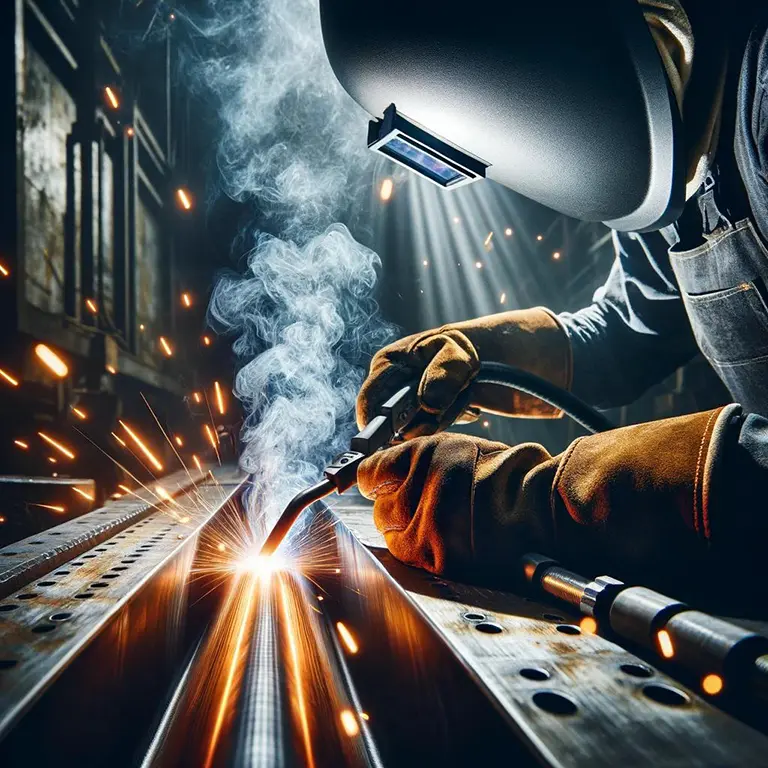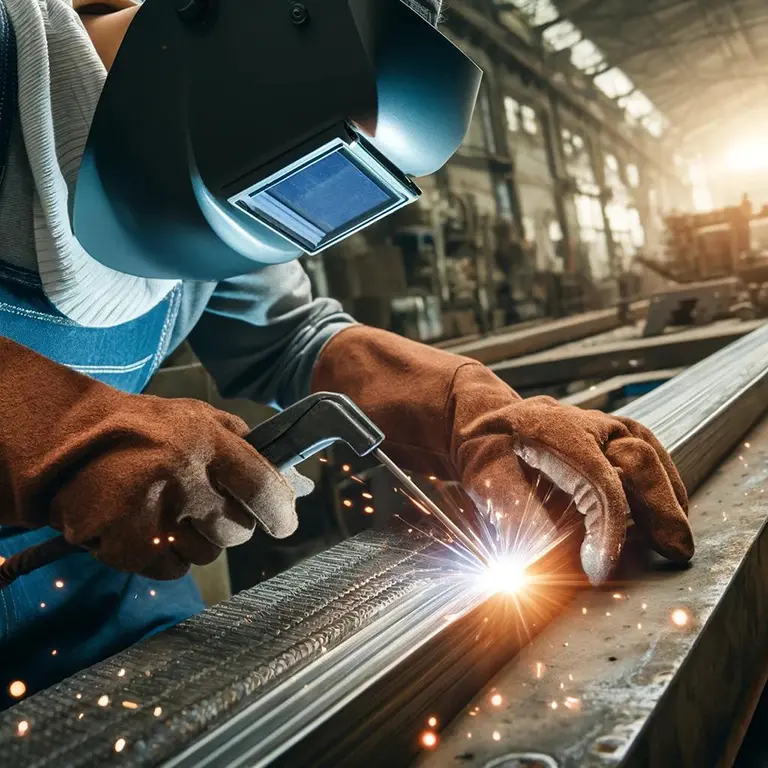Introduction to the use of common Ceramic Backing

ALAND WELDING Let you feel the most sincere welding service

1. Ceramic Backing
Welding pad is a kind of welding process equipment welding. It is a backing device preset along the back of the joint to ensure the penetration of the root of the joint and the formation of the back of the weld.
The gasket material can be metal, flux, fiber, ceramic, etc. The steel gasket should fit well with the base metal of the joint, and the gap should not be greater than 1.5mm; the steel gasket should remain continuous throughout the entire weld length (note that the box The thickness of the backing plate used for electrode arc welding, gas shielded arc welding and self-shielded flux-cored wire arc welding should not be less than 4mm, and it should not be less than 4mm for submerged arc welding. The thickness of the method’s backing plate should not be less than 6mm.
2. Ceramic Backing classification
Ceramic Backing can be classified in more detail according to its structure, use and material characteristics:
(1) Structural classification:
① Flat type (flat type): This type of Ceramic Backing usually has a flat surface and is suitable for providing protection and reinforcement on the surface of equipment or inside pipes. They are often welded to equipment surfaces or pipe interior walls to provide wear, corrosion resistance or sealing capabilities.
②Pipe type: Tube type Ceramic Backing has a tubular structure and is suitable for the lining of pipes or other components that require pipe shapes. They are often used to prevent corrosion or abrasion of the media inside the pipeline and to provide a smooth fluid transfer surface.
③Ring: Ring Ceramic Backing is usually used for sealing valves or pipe connections. They are designed in a ring shape to ensure good sealing performance between connected parts and prevent media leakage.
(2) Purpose classification:
①Wear-resistant pads: This type of pad is mainly used to provide wear-resistant protection for the equipment surface and reduce damage caused by friction and wear. They are typically used in high-wear working environments such as ore processing, cement production, etc.
②Corrosion-resistant lining: Specially designed to resist erosion by chemical media such as acids, alkalis, and salts. These liners are commonly used in the chemical industry to protect equipment from damage by corrosive media.
③High temperature resistant liner: It has good high temperature resistance and can maintain stability and integrity in high temperature environments. They are usually used to protect equipment surfaces or inside pipelines in high-temperature industrial fields such as metallurgy and electric power.
④Sealing gasket: Used for sealing connecting parts such as valves and pipelines to ensure the safe operation of the system and prevent media leakage. These gaskets are usually welded to the connecting parts to ensure good sealing properties.
(3) Material classification:
①Alumina Ceramic Backing: It has high hardness and wear resistance, and is suitable for general wear-resistant and corrosion-resistant applications.
②Silicon carbide Ceramic Backing: It has higher wear resistance and high temperature resistance, and is suitable for applications that require high wear resistance.
③Silicon nitride Ceramic Backing: It has excellent high temperature resistance and corrosion resistance, and is suitable for high temperature and corrosive media environments.

3. Benefits of Ceramic Backing
(1) Protect the surface: During the welding process, high temperature and sparks may cause oxidation, deformation or damage to the surface of the workpiece. Ceramic Backing can provide a stable, high-temperature resistant surface to protect the workpiece surface from these adverse effects, thereby ensuring the surface quality and appearance of the workpiece after welding.
(2) Improve welding quality: Ceramic Backing usually has a flat surface and good heat conduction properties, which can provide an ideal working platform and make the welding operation more stable and precise. This helps reduce deformation and warping of welded joints, improving weld quality and consistency.
(3) Reduce subsequent processing: Due to the protective effect during the welding process, Ceramic Backingcan reduce the need for subsequent processing of the welded joint surface, such as grinding, polishing, etc. Not only does this save time and labor costs, it also reduces the risk of potential defects introduced during processing.
(4) Improve production efficiency: Using Ceramic Backing can improve the efficiency of the welding process. A stable work surface and reduced need for subsequent machining saves time and makes welding operations smoother and more efficient. This is particularly important for mass production and automated welding lines.
(5) Cost reduction: Although Ceramic Backing itself may have a certain cost, the overall production cost can be reduced by improving welding quality, reducing subsequent processing, and improving production efficiency. This is an economically viable investment for long-term industrial businesses.
(6) Improve safety: Ceramic Backingcan reduce sparks and spatter generated during the welding process, thereby reducing the risk of fire and safety accidents. Its high temperature resistance also provides a safer working environment for welding operators, reducing the risk of thermal injury.
4. Use of Ceramic Backing
Ceramic welding pad is a kind of alumina ceramic material as a backing. Some people call it a welding pad. It is a ceramic material widely used in the welding process. It is mainly used to ensure the penetration of the root of the steel material joint and the formation of the back side of the weld. It is As a backing device preset along the back of the joint, it is an efficient, high-quality, low-cost welding method that forces the weld to be formed. This welding method avoids root cleaning, overhead welding and operation in a narrow closed environment, reduces the labor intensity of the welder, doubles the welding production efficiency, and ensures the welding quality. At the same time, it does not cause harm to the human body and the environment. It is different from traditional welding. Compared with other methods, it is a sustainable “green” welding method with advanced technology and high welding quality.
How to use ceramic welding pads? Place the pads on the back of the groove of the specified shape and size of the steel plate and workpiece, and weld from the front. It can form both sides at once, and the welds on the back will be full and the weld traces will be neat. Ceramic welding liners are widely used in shipbuilding, steel structures, bridges, construction, pipeline engineering, pressure vessels, chemical machinery, and metallurgical machinery manufacturing.
Generally, there will be a red alignment line in the middle of the liner (not including the cylindrical type), which corresponds to the middle of the board seam when pasting. Another important point is that when attaching the gasket, be sure to clean the dust on the surface of the iron plate. Otherwise, it will not stick tightly and it will easily fall off during welding.
In the industrial field, the advantages of using Ceramic Backing for welding are obvious. This technology not only improves welding quality and production efficiency, but also reduces the need for subsequent processing, reducing costs and safety risks. By providing a stable working surface and excellent protective performance, Ceramic Backing brings reliability and stability to industrial production, while creating higher value and competitive advantages for enterprises. With the continuous advancement and innovation of technology, I believe that the application prospects of Ceramic Backing in the welding field will be broader, bringing more innovation and development opportunities to the industrial manufacturing field.
Articles you may be interested in:
Introduction To Welding Pad Process
Common Weld Aluminum Introduction
How To Choose Industrial Water Chiller
Introduction To Common Brazing Welding
Introduction To Common Pressure Welding
Introduction To Common Pipeline Welding
The Important Role Of Welding Positioners
Introduction To 1G To 6G Welding Positions
Underwater Welding Salary And Death Rate
Introduction To Common Welding Processes
Introduction to welding materials Welding wire
Introduction To Common Welding Carbon Rods

